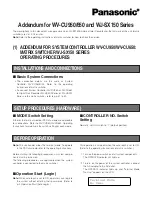
Microsoft Network Load Balancing
Network load balancing (NLB) is a clustering functionality that is implemented by Microsoft on Windows 2000 Server and Windows Server
2003 operating systems (OSs). NLB uses a distributed methodology or pattern to equally split and balance the network traffic load across a
set of servers that are part of the cluster or group. NLB combines the servers into a single multicast group and attempts to use the
standard multicast IP or unicast IP addresses and MAC addresses to transmit of network traffic. At the same time, NLB also uses a single
virtual IP address for all clients as the destination IP address, which enables servers to join the same multicast group that is transparent to
the clients (the clients do not notice the addition of new servers to the group). The clients use a cluster IP address to connect to the
server. To avoid overloading and effective performance of the servers for optimal processing of data packets, NLB enables flooding of
traffic over the virtual local area network (VLAN) ports (for Unicast mode) or a subset of ports in a VLAN (for Multicast mode.)
NLB functions in two modes, Unicast mode and Multicast mode. Configure the cluster IP address and the associated cluster MAC address
in the NLB application running on the Windows Server.
•
In Unicast mode, when the server IP address attempts to be resolved to the MAC address using the address resolution protocol (ARP),
the switch determines whether the ARP reply, obtained from the server, is an NLB type. The switch then maps the IP address (cluster
IP) with the MAC address (cluster MAC address).
•
In Multicast mode, the cluster IP address maps to a cluster multicast MAC address you configured using a
static ARP
command.
After the NLB entry is learned, the traffic forwards to all the servers in the VLAN corresponding to the cluster virtual IP address.
NLB Unicast Mode Scenario
Consider a topology in which you configure four servers, S1 through S4, as a cluster or a farm. This set of servers connects to a Layer 3
switch, which connects to the end-clients. The servers contain a single IP address (IP-cluster address of 172.16.2.20) and a single unicast
MAC address (MAC-Cluster address of 00-bf-ac-10-00-01) for load-balancing. Because multiple ports on a switch cannot learn a single
MAC address, the servers are assigned MAC addresseses of MAC-s1 to MAC-s4), respectively, on S1 through S4 in addition to the MAC
cluster address. All the servers of the cluster belong to VLAN1.
In Unicast NLB mode, the following sequence of events occurs:
•
The switch sends an ARP request to resolve the IP address to the cluster MAC address.
•
The ARP servers send an ARP response with the MAC cluster address in the ARP header and a MAC address of MAC-s1/s2/s3/s4 (for
servers S1 through S4) in the Ethernet header.
•
The switch associates the IP address with the MAC cluster address with the last ARP response it obtains. Assume that the last ARP
reply is obtained from MAC-s4 (assuming that the ARP response with MAC-s4 is received as the last one). The interface associated
with server, S4, is added to the ARP table.
•
With NLB enabled, after learning the NLB ARP entry, all the subsequent traffic floods on all ports in VLAN1.
To perform load-balancing, NLB, forwards the data frame to all the servers.
NLB Multicast Mode Scenario
Consider a topology in which you configure four servers, S1 through S4, as a cluster or a farm. This set of servers connects to a Layer 3
switch, which connects to the end-clients. They contain a single multicast MAC address (MAC-Cluster: 03-00-5E-11-11-11).
In Multicast NLB mode, configure a
static ARP configuration
command to associate the cluster IP address with a multicast
cluster MAC address.
27
Microsoft Network Load Balancing
471
Содержание S3048-ON
Страница 1: ...Dell Configuration Guide for the S3048 ON System 9 11 2 5 ...
Страница 137: ...0 Gi 1 1 Gi 1 2 rx Flow N A N A 0 0 No N A N A yes Access Control Lists ACLs 137 ...
Страница 142: ...Figure 10 BFD Three Way Handshake State Changes 142 Bidirectional Forwarding Detection BFD ...
Страница 241: ...Dell Control Plane Policing CoPP 241 ...
Страница 287: ... RPM Synchronization GARP VLAN Registration Protocol GVRP 287 ...
Страница 428: ...Figure 53 Inspecting the LAG Configuration 428 Link Aggregation Control Protocol LACP ...
Страница 429: ...Figure 54 Inspecting Configuration of LAG 10 on ALPHA Link Aggregation Control Protocol LACP 429 ...
Страница 432: ...Figure 56 Inspecting a LAG Port on BRAVO Using the show interface Command 432 Link Aggregation Control Protocol LACP ...
Страница 433: ...Figure 57 Inspecting LAG 10 Using the show interfaces port channel Command Link Aggregation Control Protocol LACP 433 ...
Страница 477: ...Figure 73 Configuring Interfaces for MSDP Multicast Source Discovery Protocol MSDP 477 ...
Страница 478: ...Figure 74 Configuring OSPF and BGP for MSDP 478 Multicast Source Discovery Protocol MSDP ...
Страница 479: ...Figure 75 Configuring PIM in Multiple Routing Domains Multicast Source Discovery Protocol MSDP 479 ...
Страница 483: ...Figure 77 MSDP Default Peer Scenario 2 Multicast Source Discovery Protocol MSDP 483 ...
Страница 484: ...Figure 78 MSDP Default Peer Scenario 3 484 Multicast Source Discovery Protocol MSDP ...
Страница 634: ...protocol spanning tree pvst no disable vlan 300 bridge priority 4096 634 Per VLAN Spanning Tree Plus PVST ...
Страница 745: ...Figure 104 Single and Double Tag TPID Match Service Provider Bridging 745 ...
Страница 746: ...Figure 105 Single and Double Tag First byte TPID Match 746 Service Provider Bridging ...
















































